Probably every aspiring stargazer has wondered how many types of telescopes (including telescopes for beginners and professionals) are out there. Ever since the first telescope patent was forward at the dawn of the 17th century, the scope-making technology up to the point where we have optical devices capable of seeing the unseen (UV, submillimeter, X-Ray telescopes). In this article, we are going to talk, at length, about the main types of optical stargazing devices and their subtypes. You can check our list of the best telescopes for beginners here.
Refracting Telescopes
Very popular among 19th-century astronomers, refracting telescopes use lenses in order to form a coherent image. By using the o optics principle of refraction (deflection of light/radio waves as it passes through a medium, water or air for instance), these types of telescopes make the image appear smaller when viewed through the eyepiece. Refractor telescopes employ convex glass lenses to collect light, while reflector telescopes (we’ll cover that in the next section of the article) use mirrors to form an image.
Refracting telescopes are best employed for terrestrial observations (looking at a mountain’s peak during the daytime) but can also be used to view bright sky objects such as the Moon, Venus or Saturn. Furthermore, they’re easier to operate, even by a beginner, and are portable.
On the other hand, refractors are prone to an optical phenomenon called chromatic aberration (light passing through different angles causing the image to appear defocused) and spare parts, such as lenses, are typically very expensive, meaning that the owner can very well end up buying a new telescope instead of changing lenses.
There are many subtypes of refracting telescopes, each with their own pros and cons. Here, we will be discussing the most important subtypes – the achromatic, the Galilean, and the Keplerian telescope.
Achromatic Telescope
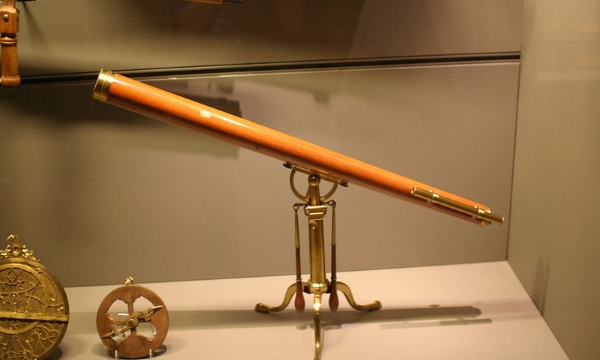 The first subtype of refracting telescopes is called an achromatic. As the name suggests, it employs lenses capable of compensating for the chromatic aberration effect. To do so, the achromatic uses two types of lenses – the first one is a concave lens built from Flint glass (has a greater dispersion rate), while the second is a convex lens made of the so-called Crown glass (lower dispersion rate).
The first subtype of refracting telescopes is called an achromatic. As the name suggests, it employs lenses capable of compensating for the chromatic aberration effect. To do so, the achromatic uses two types of lenses – the first one is a concave lens built from Flint glass (has a greater dispersion rate), while the second is a convex lens made of the so-called Crown glass (lower dispersion rate).
The ‘trick,’ if we can call that, is that the two lenses are mounted next to one another so that the chromatic aberration of one lens cancels the effect of the second one.
There are five achromatic telescope designs – the Littrow design (equiconvex crown and flint glass), the Fraunhofer, Clark doublet (equiconvex crown and flint to reduce the so-called ghosting effect), the Oil-spaced crown (increased light transmission and no ghosting), and the Steinheil doublet (flint-made glass).
Galilean Telescope
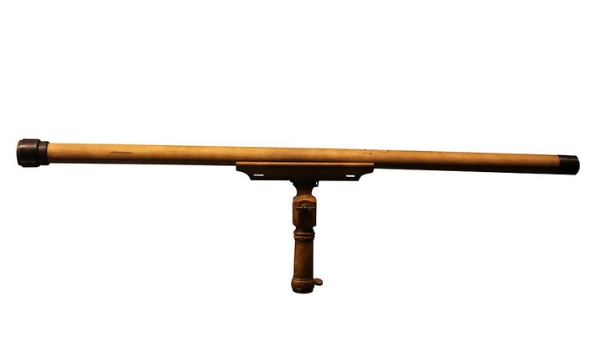 Conceived by Galileo at the dawn of the 17th century, this design uses a mix of the convergent and divergent lens. Because it does not have an intermediary focus, the telescope can produce upright and non-inverted images.
Conceived by Galileo at the dawn of the 17th century, this design uses a mix of the convergent and divergent lens. Because it does not have an intermediary focus, the telescope can produce upright and non-inverted images.
Furthermore, since Galileo’s design is not capable of compensating for chromatic aberration, the images are hazy, not to mention the fact that the field of view appears narrowed compared to later designs. Still, the earliest Galilean telescope was capable of focusing sky objects more than 30 times. Variations reminiscent of this type can help you study the Moon’s craters, Venus, and four of Jupiter’s moons.
Keplerian Telescope
 Shortly after Galileo trumpeted the design of the eyepiece capable of peering beyond the cloud, Johannes Keppler announced an improved telescope – his take on the Galilean optical device. The improvement Kepler brought was using a convex lens for the eyepieces part, whereas Galileo’s designed employed a concave one. This resulted in a broader field of view and, of course, a higher magnification factor.
Shortly after Galileo trumpeted the design of the eyepiece capable of peering beyond the cloud, Johannes Keppler announced an improved telescope – his take on the Galilean optical device. The improvement Kepler brought was using a convex lens for the eyepieces part, whereas Galileo’s designed employed a concave one. This resulted in a broader field of view and, of course, a higher magnification factor.
Reflecting Telescopes
The second type of telescope is called a reflector. As you’ve guessed it, the name’s given by the optical device’s capability of harvesting the principle of reflecting (light or another type of waves are bounced back to the place of origin upon encountering a media). Compared to refractors which employ lenses to produce an image, reflecting telescopes use mirrors.
A basic reflecting telescope is built with two mirrors (the primary and the secondary mirror). Construction-wise, the first mirror is placed at the open end of the tube, while the secondary lies near the eyepiece. The telescope produces an image by bouncing the light rays between two mirrors. Upon hitting the secondary mirror, the image is collected by the eyepiece which magnifies it.
There are many types of reflecting telescopes. The most important are Cassegrain, Newtonian, and Herschelian.
Cassegrain Telescope
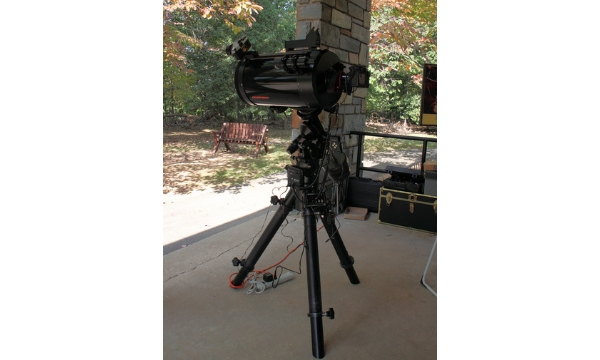 The Cassegrain telescope and its derivatives, use a combo of convex and concave mirrors to produce an image. With a longer focal point, Cassegrain optical devices are great astrophotography platforms.
The Cassegrain telescope and its derivatives, use a combo of convex and concave mirrors to produce an image. With a longer focal point, Cassegrain optical devices are great astrophotography platforms.
With a history that goes back to the 17th century, the classic Cassegrain design reflects light from the hyperbolic mirror (another word for secondary mirror) through a small orifice located in the primary mirror. While Cassegrain telescopes are great for observing deep sky objects, they require a heavier mount to ensure stability. Furthermore, budget-wise, they are considerably pricier compared to reflectors.
Newtonian Telescope
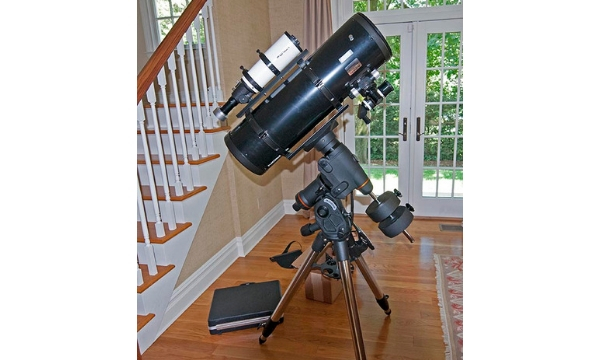 One of Sir Isaac Newton’s many contributions to the science is the optical design that bears his name. The Newtonian reflector telescope employs a primary concave mirror and a secondary flat diagonal mirror in order to produce an image. This design fully compensates for chromatic aberration and have a wider field of view since they tout a short focal ration. The design’s major caveat is collimation (re-alignment) since the two mirrors can be easily offset due to handling and transportation.
One of Sir Isaac Newton’s many contributions to the science is the optical design that bears his name. The Newtonian reflector telescope employs a primary concave mirror and a secondary flat diagonal mirror in order to produce an image. This design fully compensates for chromatic aberration and have a wider field of view since they tout a short focal ration. The design’s major caveat is collimation (re-alignment) since the two mirrors can be easily offset due to handling and transportation.
Herschelian Telescope
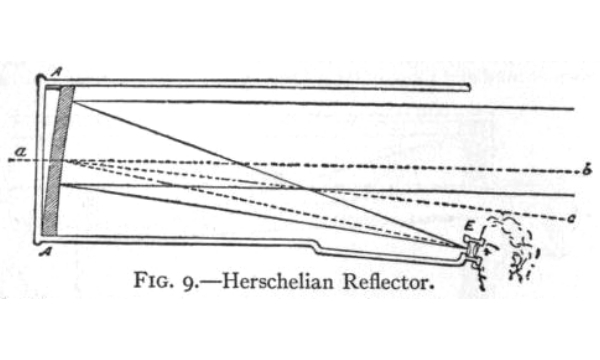 At the end of the 18th century, German-British astronomer William Herschel introduces the concept of large telescopes (aperture greater than 120 cm). Herschel’s design involved a tilted primary mirror, thus eliminating the observer’s head from blocking the light.
At the end of the 18th century, German-British astronomer William Herschel introduces the concept of large telescopes (aperture greater than 120 cm). Herschel’s design involved a tilted primary mirror, thus eliminating the observer’s head from blocking the light.
Although the earliest Herschelian designs were not devoid of geometrical aberrations, it eliminated the need to use a secondary mirror as the Newtonian telescope-manufacturing tradition dictated, since the material used (metal) was prone to tarnishing.
Catadioptric Telescopes
Catadioptric telescopes are the result of the marriage between refractors and reflectors. More specifically, catadioptrics uses a combination of mirrors and lenses to produce an image. This design significantly reduces geometrical aberration while, at the same time makes the telescope lighter, cheaper, and easier to produce en-mass. The most important types of telescopes are Maksutov, Schmidt-Newton, and Lurie-Houghton.
Maksutov Telescope
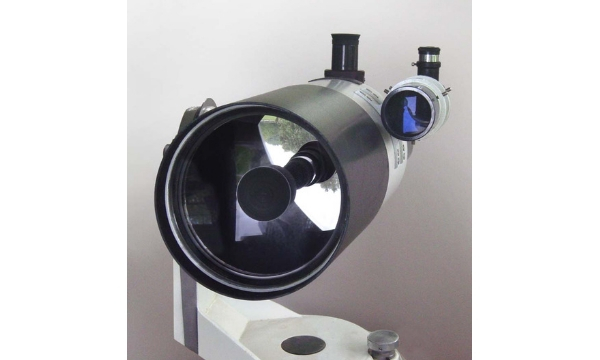 In 1941, a Russian optician by the name of Dmitri Dmitrievich Maksutov patented one of the first catadioptric telescopes which employed a spherical mirror and a meniscus lens (a lens with has one concave side and one convex side). This design, which calls for the lens being placed at the entrance of the telescope, totally compensates for chromatic aberration, as well as other types of errors such as coma (off-axis error that makes stars appear distorted).
In 1941, a Russian optician by the name of Dmitri Dmitrievich Maksutov patented one of the first catadioptric telescopes which employed a spherical mirror and a meniscus lens (a lens with has one concave side and one convex side). This design, which calls for the lens being placed at the entrance of the telescope, totally compensates for chromatic aberration, as well as other types of errors such as coma (off-axis error that makes stars appear distorted).
Schmidt-Newton Telescope
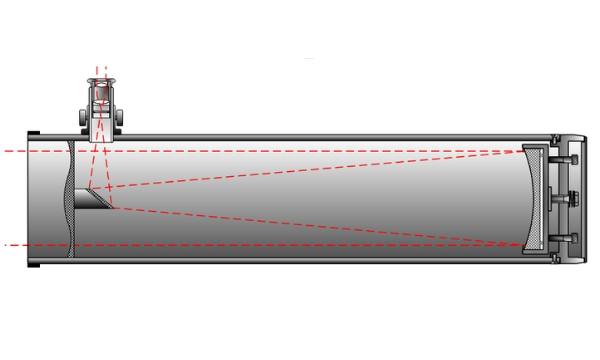 The Schmidt-Newton telescope combines elements from the Matsukov, as well as the Newtonian designs. As far as manufacturing is concerned, this type of catadioptric employs a primary mirror which is spherical and a Schmidt corrector plate that’s capable of compensating for the so-called spherical aberration effect (image appears as being imperfect due to the fact that light is refracted greatly when it hits the edge of a mirror). To make the image even clearer, the secondary mirror is placed at a 45-degree angle.
The Schmidt-Newton telescope combines elements from the Matsukov, as well as the Newtonian designs. As far as manufacturing is concerned, this type of catadioptric employs a primary mirror which is spherical and a Schmidt corrector plate that’s capable of compensating for the so-called spherical aberration effect (image appears as being imperfect due to the fact that light is refracted greatly when it hits the edge of a mirror). To make the image even clearer, the secondary mirror is placed at a 45-degree angle.
Lurie-Houghton Telescope
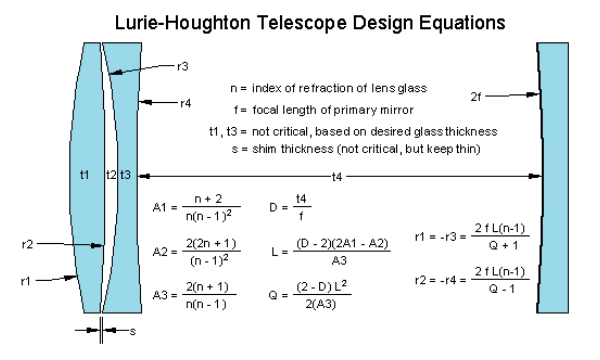 Taking after the Maksutov design, the Lurie-Houghton telescope employs spherical mirrors and lenses to produce a crisp and accurate image. The major improvement relies on the fact that the positive and negative lenses affix the telescope’s aperture. While correcting for spherical aberration, this type of design is easier to manufacture and maintain compared to the classic Matsukov design.
Taking after the Maksutov design, the Lurie-Houghton telescope employs spherical mirrors and lenses to produce a crisp and accurate image. The major improvement relies on the fact that the positive and negative lenses affix the telescope’s aperture. While correcting for spherical aberration, this type of design is easier to manufacture and maintain compared to the classic Matsukov design.
Conclusion
There are three main types of amateur telescopes available on the market (refractor, reflector, and catadioptric) each of them with their pros and cons. The subtypes you’ve just read about are the most important. In reality, there are far more telescopes, not counting the ones used by observatories or space agencies.













![Best Crochet Hooks for Beginners and Pros [2020 Update] best crochet books](https://www.awebtoknow.com/wp-content/uploads/2018/01/best-crochet-books-100x70.jpg)


